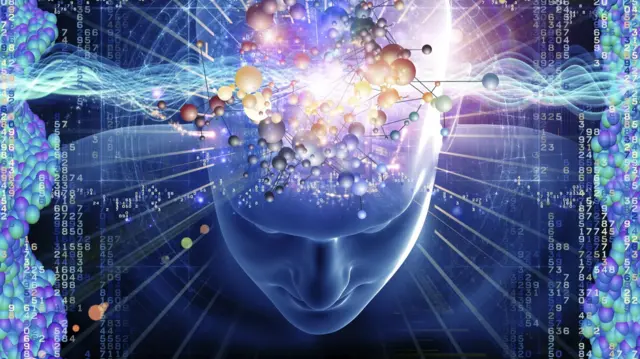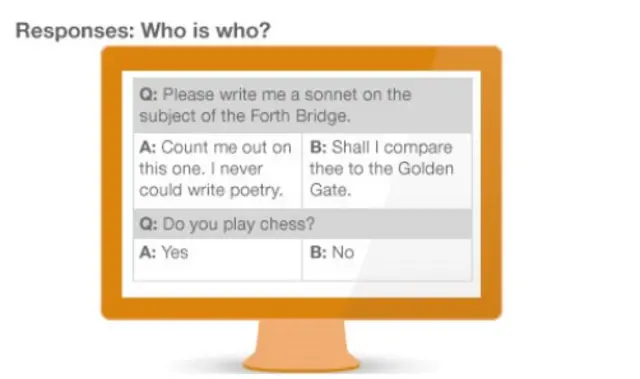Them's the rulespublished at 11:55
Andrew Martin, from Goldsmiths University of London explains how the Loebner Prize will work.
Human versus Artificial Intelligence
The annual Loebner Prize in Artificial Intelligence is taking place
Judges carry out simultaneous conversations with both a chatbot and a human
They have to try to work out which is a computer program and which a person
An award is given to the most human-like bot entered
If a bot fools half the judges it will win a grand prize of $100,000 and the competition will be discontinued
Leo Kelion, Clare Spencer and Bernadette McCague
Andrew Martin, from Goldsmiths University of London explains how the Loebner Prize will work.
Human versus Artificial Intelligence
 Jane Wakefield
Jane Wakefield
Technology reporter
I have been writing a series of articles about artificial intelligence and it is very exciting to see such an exciting test unfold in front of my eyes.
I've got some experts on hand to help guide me through the day - including Nello Cristiani, a professor of artificial intelligence at Bristol University - who will be watching our live feed - and David Levy, a past winner, who is coming along this year to watch.
I will also be interviewing Hugh Loebner who launched the prize 25 years ago.NB the live video feed starts in about 15 minutes, and you can watch it by clicking Live Coverage in the section at the top of the page.
 Image source, Thinkstock
Image source, ThinkstockTweeters have been suggesting what questions Rory should ask to spot the difference between a bot and a human.
Tweet your questions with the hashtag #IntelligentMachines.
Here's a little promo video Rory made in advance of the event.
We're not sure he's taking it all too seriously.
 Jane Wakefield
Jane Wakefield
Technology reporter
I'm very excited to be here at Bletchley Park - home of the codebreakers and Alan Turing, one of the first people to consider the possibility that machines could one day think.
At the moment I'm in an empty room next to Hut eight but later it will be filled with people taking part in the Loebner Prize, an iteration of the Turing Test which seeks to find a machine that can fool a human into thinking it is human.
If you want to read more about Turing's work on AI, check out this article by Prof Noel Sharkey from 2012:Alan Turing: The experiment that shaped artificial intelligence
 Image source, Science Photo Library
Image source, Science Photo LibraryThe Loebner Prize is based on an idea first proposed by Alan Turing in 1950 - the scientist who had earlier helped crack Germany's Enigma code in World War II.You can read his original paper via this link, external - but here's a brief explanation of the AI test he proposed:

Turing was inspired by a parlour game in which an interrogator put questions to a man and woman (A and B) in a separate room who replied with typewritten notes. The aim was to determine which was the man and which was the woman.

Turing's test replaced the man with a computer running a program designed to deceive the questioner about its true identity. Would the interrogator still be able to determine which was the woman, he wanted to know.

The idea was that if the person asking the questions could not tell the difference between a human and a machine, the computer would be considered to be thinking and have artificial intelligence.

Turing did not explicitly say that the interrogator should be told that one of the two respondents was a computer.
But the judges in the Loebner Prize are aware of this.
They have five minutes to ask questions to determine which respondent is a computer and which a person.
Here's a quick video our technology reporter Rory Cellan-Jones sent in explaining what's involved in today's event.
Rory Cellan-Jones explains the Loebner Prize in Artificial Intelligence
Welcome to the live page for the Loebner prize.
We will be bringing you updates from Bletchley Park where judges are going to see if they can tell which is which between a real person and an artificial intelligence chatbot.
Tweet us using the hashtag #IntelligentMachines, external.